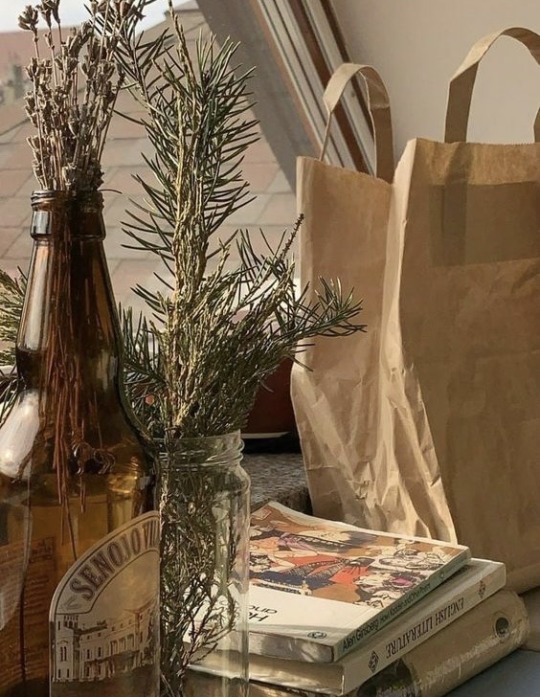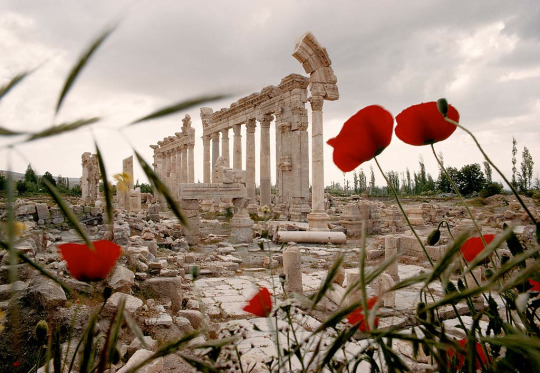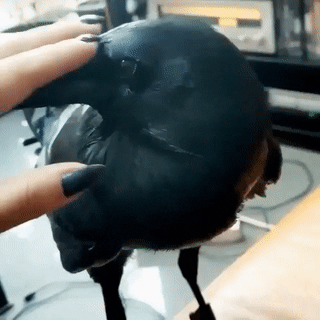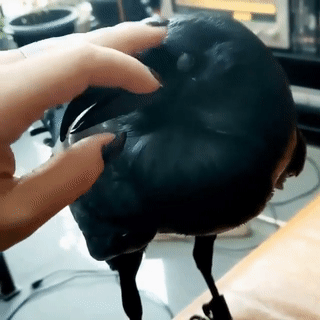Text
Apollo and the mythical land of Hyperborea

Literature
Along with Atlantis and Thule, Hyperborea was one of several terrae incognitae to the Greeks and Romans. Classical writers reported that people lived to the age of one thousand and enjoyed lives of complete happiness.
One of the earliest written mentions of this realm comes from Hesiod. In Histories, Herodotos also recorded Hesiod along with Aristeas and even Homer as sources that supposedly mentioned the Hyperboreans, the latter purportedly having written of Hyperborea in his lost work Epigoni. Later classical authors were also known to describe or reference Hyperborea in their works.
Pindar on Hyperborea, Tenth Pythian Ode
Never the Muse is absent
from their ways: lyres clash and flutes cry
and everywhere maiden choruses whirling.
Neither disease nor bitter old age is mixed
in their sacred blood; far from labour and battle they live

Summary of the myth
Hyperborea was a beautiful realm of eternal spring located in the far north beyond the home of the north wind; that's exactly what the name means, "Beyond Boreas". It's described as a continent-bound land bordered on the north by the great, earth-encircling river Okeanos, on the south the peaks of the Rhipaion Mountains, home to Boreas whose chilling breath brought winter to the lands of the south. Its peaks were inhabited by Grypes and its valleys by the fierce, one-eyed Arimaspoi tribe. Beneath the southern slopes lay Pterophoros, a desolate land cursed with eternal winter.
Hyperborea's main river was the Eridanos whose banks were lined with amber-weeping poplar trees and its waters home to flocks of white swans. Blessed with eternal spring, the land produced two crops of grain per year, but most of the countryside was wild and covered with stunning forests, the so-called "garden of Apollon."
It was said that its people were descended from Gaia and that they were a blessed, long-lived race untouched by war, hard toil and the ravages of old age and disease. The oldest myths portray them as favourites of Apollo.
The land was ruled by three priests of Apollo, known as Boreades, sons of Boreas. In the capital, there stood a temple dedicated to the Apollo where hecatombs of asses were sacrificed in his honour. The people also celebrated their god in an eternal festival of music, song and dance whose hymns were joined by the sweet song of the circling Hyperborean swans.
The Hyperborean folk were themselves believed to transform into swans upon reaching old age by bathing in the bitumen swamps of the river Eridanos. The normally mute swan was further believed to sing a dirge as its death approached, reputedly the sweetest of all bird songs.
Sounds nice, huh? Well, it certainly did to the Greeks, which resulted in several versions of the myth and speculations about the location and even the existence of this paradisiac land. Some even claimed to have travelled there.
More about Apollo & swans, mentions of Hyperborea: LINK

Myth and cult
There are several myths mentioning Hyperborea:
The mythical hero Perseus travelled to Hyperborea and was entertained by its folk when he was searching for the Nymphs who guarded the treasures of the gods, also known as the Graiai, swan-bodied women who could reveal the location of Medusa. Herakles made the same journey on two separate occasions. The first time was in his quest for the golden-horned deer of Artemis which fled north during the chase and the second time he sought Atlas and the golden apples of Hesperides.
The myth of Hyperborea was also quite significant for the Delphic and Delian cults of Apollo. According to some stories, its people were the founders of several important Greek shrines and in some cases, Hyperboreans were even linked to the founding of the Olympic Games.
But let's get back to Delos and Delphi:
The Delians told a tale of how Leto came to the island from Hyperborea accompanied by a pack of wolves where she gave birth to Apollon with the assistance of Eileithyia who was summoned from the northern realm to further the labour. After this event, the Hyperboreans sent pilgrims to the island - five men and several maiden-priestesses. However, it was said that after the maidens were either raped or killed, the Hyperboreans ended the pilgrimage and instead delivered their offerings indirectly through neighbouring tribes and peoples, for example, Herodotos spoke of said offerings coming to Scythia packed with straw, being passed from tribe to tribe until they arrived at Dodona and later arriving at Apollo's temple on Delos.
In Delphi, the second of the early, mythical temples of the shrine was said to have been built by Hyperborean pilgrims out of beeswax and feathers. When the army of the Gauls tried to seize the temple in historical times, phantoms of these prophets were said to have appeared on the battlefield, routing the army.
The Greeks also believed that Apollo spent the winter among the Hyperboreans. His absence from the world caused coldness and this was marked as his "annual death". He returned to the world during the beginning of the spring. The Theophania festival was a celebration of the return of Apollo to Delphi.
Annual death? Aren't the gods deathless?
It was more of a metaphor or a way to somewhat explain certain things but the myth was also an important part of the Delphic cult of Apollo.
Let's take a look at what happened to the sanctuary of Delphi during this time and what it may have been an explanation of.
The "non-mythical" things that we should take into account are the position of the sun or more specifically, the illumination of Apollo's statue at the sanctuary and the disappearance of Lyra and Cygnus - two constellations associated with the god. Another thing is the high probability that the gasses emitted in this place were affected by the change in seasons. These biogenic gases were shallow subsurface gases and when they were present, visitors to the Temple would have experienced an altered mental state. During the winter months, the "pneuma entousiastikon" [spirit of euphoria] was rarely triggered due to the absence of gas. Because of that and since Apollo was believed to be absent, no prophecies were issued during this time.
Back to mythology; Apollo left the sanctuary for winter and travelled to Hyperborea. That's where Dionysus comes in! He was believed to inhabit the temple during Apollo's absence.

Geography
When trying to look for an "irl" Hyperborea, the mythical descriptions might point us somewhere towards the North of Europe.
Several classical Greek authors came to identify the Hyperboreans with their Celtic neighbours in the north and some linked it to Thrace.
More modern interpretations regarding the location connect Hyperborea to Central Asia, specifically Siberia due to the myth telling us about how Heracles sought the golden-antlered hind of Artemis in Hyperborea. As the reindeer is the only deer species of which females bear antlers, this would suggest an arctic or subarctic region.
The possible location is also placed beyond the Dzungarian Gate into northern Xinjiang.
Hyperborea is sometimes theorised to be Eastern Europe, mostly because of the presence of amber in the mythical river Eridanos which could be linked to the Vistula. Since amber arrived in Greek hands from someplace known to be far to the north. Avram Davidson proposed the theory that Hyperborea was derived from an explanation by the Greeks for the insects, which apparently originated in a warm climate, found embedded inside the amber arriving in their cities from cold northern countries.
Because of this, the Greeks might have believed that the coldness of northern countries was due to the cold breath of Boreas, the North Wind. So if one travelled "beyond Boreas", one would find a warm and sunny land and thus called it Hyperborea.
Sources:
theoi.com
Delphi and Cosmovision: Apollo's Absence At the Land of the Hyperboreans and the Time for Consulting the Oracle
Calendric Aspects of Myths and Cults Involving Apollo's Visit to Hyperborea by T. Bilić
The American Journal of Philology, Amber, Avallon and Apollo's Singing Swan by F. M. Ahl
355 notes
·
View notes
Text
There's not enough love and appreciation for Aesculapius/Asklepios on this site and I'm Not Ok with that
1K notes
·
View notes
Text
There's not enough love and appreciation for Aesculapius/Asklepios on this site and I'm Not Ok with that
1K notes
·
View notes
Text

Sliding scale reiki:
15mins $7-15
30mins $15-35
60mins $30-65
Sliding scale tarot readings:
3 card reading $5-10
5 card reading $7-15
8 card reading $13-20
10 card reading $15-25
15 card reading $18-30
20 card reading $25-40
235 notes
·
View notes
Text

Sliding scale reiki:
15mins $7-15
30mins $15-35
60mins $30-65
Sliding scale tarot readings:
3 card reading $5-10
5 card reading $7-15
8 card reading $13-20
10 card reading $15-25
15 card reading $18-30
20 card reading $25-40
235 notes
·
View notes
Text

Sliding scale reiki:
15mins $7-15
30mins $15-35
60mins $30-65
Sliding scale tarot readings:
3 card reading $5-10
5 card reading $7-15
8 card reading $13-20
10 card reading $15-25
15 card reading $18-30
20 card reading $25-40
235 notes
·
View notes
Photo

We cannot know his legendary head with eyes like ripening fruit. And yet his torso is still suffused with brilliance from inside, like a lamp, in which his gaze, now turned to low,
gleams in all its power. Otherwise the curved breast could not dazzle you so, nor could a smile run through the placid hips and thighs to that dark center where procreation flared.
Otherwise this stone would seem defaced beneath the translucent cascade of the shoulders and would not glisten like a wild beast’s fur:
would not, from all the borders of itself, burst like a star: for here there is no place that does not see you. You must change your life.
Archaic Torso of Apollo by Rainer Maria Rilke
Apollo Crowning Himself, 1781, Antonio Canova. J. Paul Getty Museum.
2K notes
·
View notes
Text
I tried to make how i see Apollo. I saw him with warm golden eyes, as well as with blue eyes.
!reminder! (Everyone sees deities in a different way because they are Gods, they change they're appearance.)

☀️
Warm Light, you who I hold close to my heart.
Dear God of the silver arch, may you always look over me, to protect me and guide me.
As the sun rises, I am grateful.
☀️
231 notes
·
View notes
Photo




The Guardian of the Lost // Being of Light by Pierre-Alexandre Schuller
This artist on Instagram // Facebook
2K notes
·
View notes
Text

Me feeling anxious and asking Apollo for advice.
*just keep going and hang in there, things will change soon, for now rest and heal*
3 notes
·
View notes
Photo

We cannot know his legendary head with eyes like ripening fruit. And yet his torso is still suffused with brilliance from inside, like a lamp, in which his gaze, now turned to low,
gleams in all its power. Otherwise the curved breast could not dazzle you so, nor could a smile run through the placid hips and thighs to that dark center where procreation flared.
Otherwise this stone would seem defaced beneath the translucent cascade of the shoulders and would not glisten like a wild beast’s fur:
would not, from all the borders of itself, burst like a star: for here there is no place that does not see you. You must change your life.
Archaic Torso of Apollo by Rainer Maria Rilke
Apollo Crowning Himself, 1781, Antonio Canova. J. Paul Getty Museum.
2K notes
·
View notes








